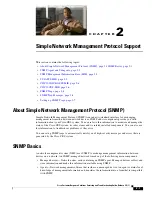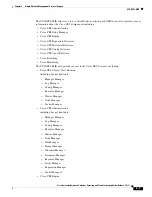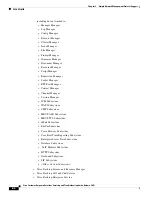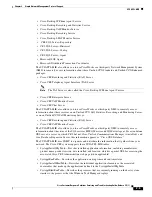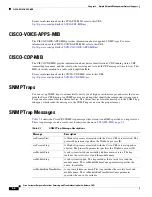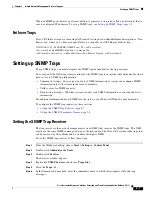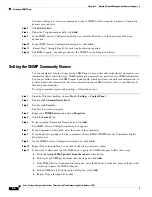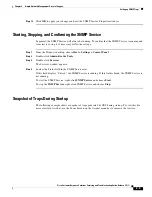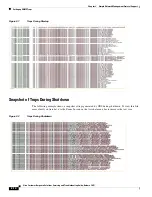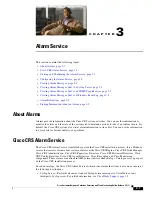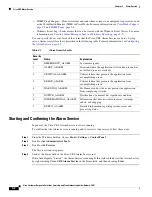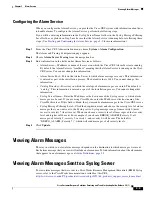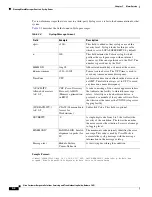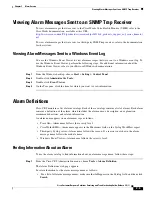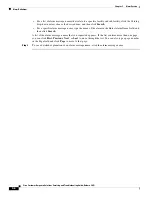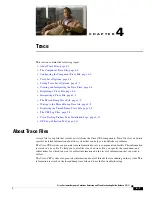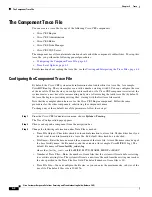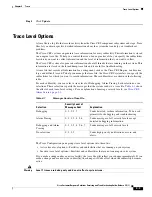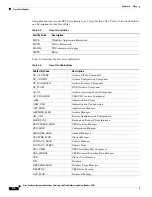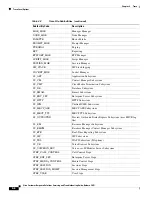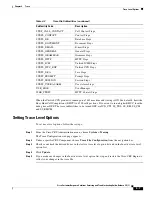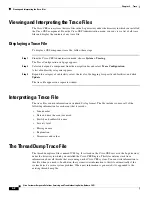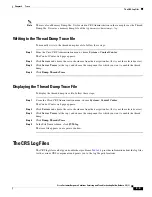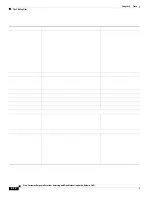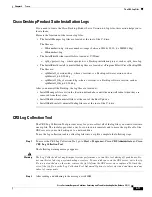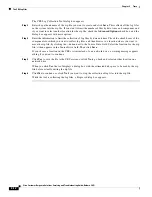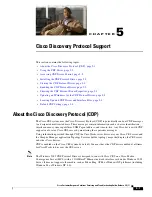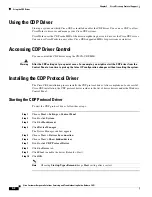
3-5
Cisco Customer Response Solutions Servicing and Troubleshooting Guide, Release 5.0(1)
Chapter 3 Alarm Service
Viewing Alarm Messages Sent to an SNMP Trap Receiver
Viewing Alarm Messages Sent to an SNMP Trap Receiver
To view alarm messages that were sent to the CiscoWorks Voice Health Monitor (VHM), refer to the
CiscoWorks documentation, available at this URL:
http://www.cisco.com/en/US/products/sw/cscowork/ps2431/tsd_products_support_eol_series_home.ht
ml
To view alarm messages that were sent to a third-party SNMP trap receiver, refer to the documentation
for that system.
Viewing Alarm Messages Sent to a Windows Event Log
You use the Windows Event Viewer to view alarm messages that were sent to a Windows event log. To
use the Windows Event Viewer, perform the following steps. For additional information about the
Windows Event Viewer, refer to your Microsoft Windows documentation.
Step 1
From the Windows desktop, choose
Start > Setting > Control Panel
.
Step 2
Double-click
Administrative Tools
.
Step 3
Double-click
Event Viewer
.
Step 4
On the Tree pane, click the item for which you want to view information.
Alarm Definitions
Cisco CRS maintains a list of alarm catalogs. Each of these catalogs contains a list of alarms. Each alarm
contains a definition of the alarm, which includes the alarm name, a description, an explanation,
recommended actions, and related information.
An alarm name appears in an alarm message as follows:
•
Trace file—Alarm name follows the severity level.
•
CiscoWorks RME—Alarm name appears in the Mnemonic field on the Syslog WorkFlow report.
•
Third-party Syslog server—Alarm name follows the reason. If a reason is not shown the alarm
message name follows the module name.
•
Windows Event Viewer—Alarm name follows the severity level.
Finding Information About an Alarm
To use the alarm catalog to find information about an alarm message name, follow these steps:
Step 1
From the Cisco CRS Administration menu, choose
Tools > Alarm Definition
.
The Alarm Definitions web page appears.
Locate information for the alarm message name as follows:
•
For a list of all alarm message names, make sure that
All
appears in the Catalog field, and then click
Search
.
Summary of Contents for Cisco Unified Queue Manager
Page 21: ...P A R T I Serviceability ...
Page 22: ......
Page 61: ...P A R T I I Troubleshooting ...
Page 62: ......

